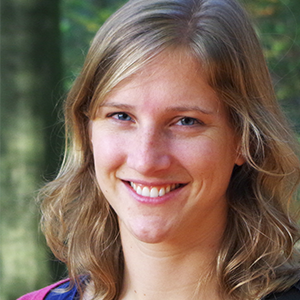Macroscopic Modelling of Active Mode Traffic
The bicycle is a popular mode of transport in the Netherlands. In urban peak hours, the heavy bicycle traffic can result in local congestion on narrow cycle paths and intersections. Besides delays, the congestion often causes chaotic and unsafe situations. Municipalities have indicated that they would like to improve the situation for cyclists, but they do not know in what way. Should they widen the cycle path? Or extend the green time for cyclists? Or create larger waiting areas in front of intersections? To answer these question, a better understanding of bicycle flow dynamics is required, and that is where my PhD project comes in.
A common way to understand and predict where and when congestion occurs is using mathematical models. However, a certain level of understanding of bicycle flow dynamics is required before it can be modelled. Bicyclist behaviour is being modelled on a microscopic level, where each cyclist is described individually. However, this method becomes computationally demanding and time consuming when the number of cyclists increase, as is the case in congestion. Another approach is macroscopic modelling in which the movement is described on an aggregated level in terms of density, average speed and flow. This method is used in pedestrian and car traffic modelling, but not yet in bicycle flow traffic. The main advantage of the macroscopic approach lies in simplicity. By describing the flow on an aggregated level, the different behaviour of individual people is averaged out. By looking at the flow patterns and characteristics, the overall behaviour can be captured, which is sufficient for calculating travel times and delay of cyclists. Furthermore, calculating the bicycle movements on the aggregated level instead of individual level takes up less computing time.
This project aims to get insight into the flow characteristics of cyclists in a quantitative way, and to best describe the relation between density, speed and flow in different infrastructure settings (i.e. width, directionality, etc.). The insights will be retrieved by observing and analysing real-life observations and by conducting a controlled experiment. Furthermore, a macroscopic model will be developed which will be able to reproduce bicycle flow on a busy cycle path and intersection. This model can be used to test different measures or designs to their effect on bicycle flow.

Marie-Jette WierbosStart/end date: 30st November, 2016-2020Daily supervisor: Victor Knoop, Bernat Goni-Ros Promotor: Serge Hoogendoorn |